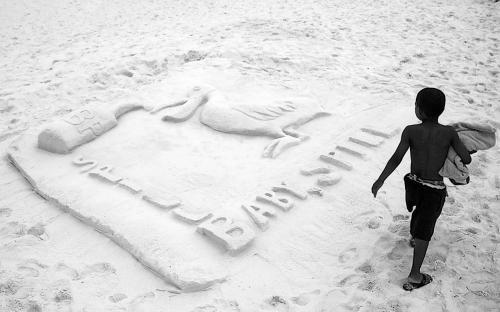
© The Associated PressThe winning sand sculpture in the Fiesta of Five Flags sand sculpture contest at Pensacola Beach, Fla., on Sunday, displays a can of BP oil being poured over a pelican. Several oil spill-themed sculptures were built by angry residents.
I figured there were probably all sorts of technical reasons why this was a fanciful notion, but it turns out not so much. Apparently the former Soviet Union (U.S.S.R.) used nuclear weapons on five separate occasions between 1966 and 1981 to successfully cap blown-out gas and oil surface wells (there was also one attempt that failed), which have been documented in a U.S. Department of Energy report on the U.S.S.R.'s peaceful uses of nuclear explosions.
Russia is now urging the United States to consider doing the same.
Komsomoloskaya Pravda, the best-selling Russian daily newspaper, asserts that although based on Soviet experience there's a one-in-five chance a nuke might not seal the well, it's "a gamble the Americans could certainly risk."
Reportedly, the U.S.S.R. developed special nuclear devices explicitly for closing blown-out gas wells, theorizing that the blast from a nuclear detonation would plug any hole within 25 to 50 meters, depending on the device's power. Much as I had idly imagined, massive explosions can be employed to collapse a runaway well on itself, thus plugging, or at least substantially stanching, the flow of oil.
